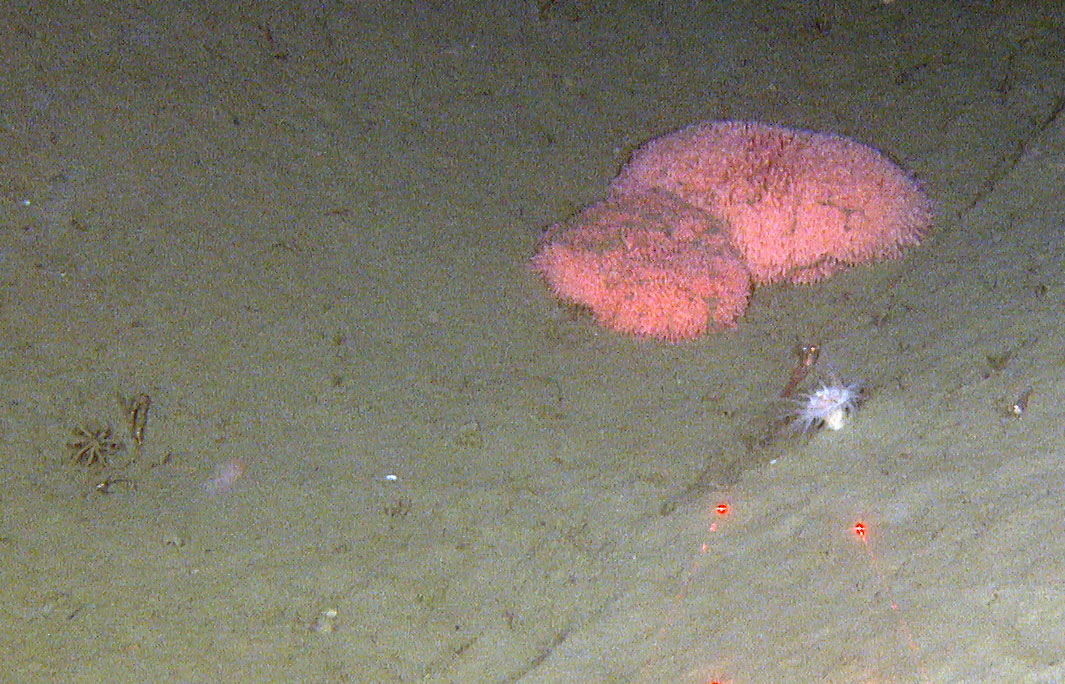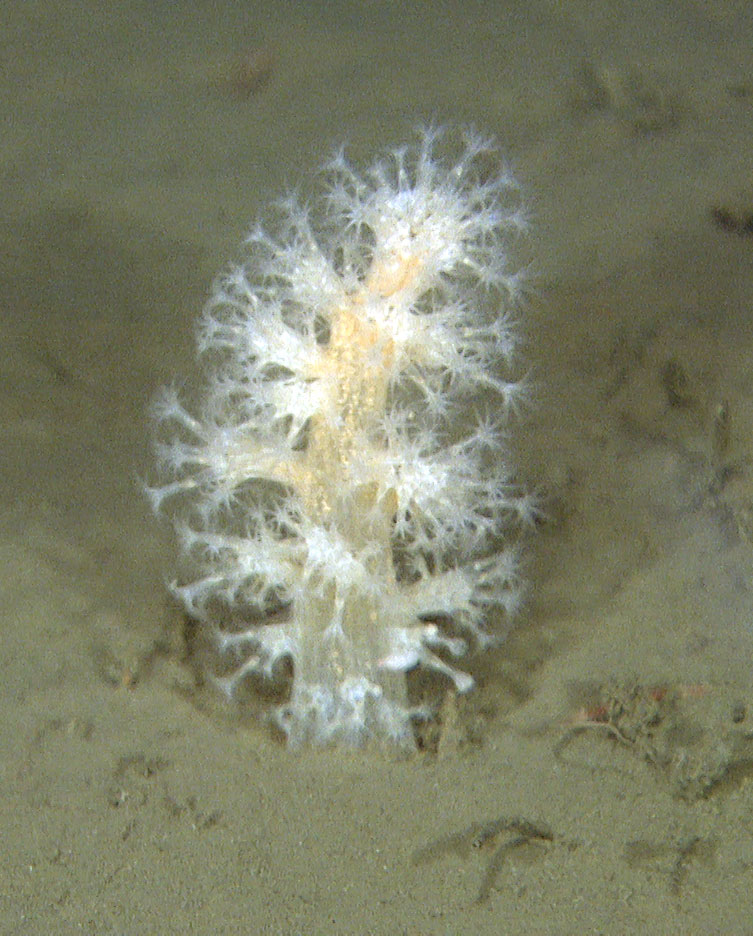
A small mollusc with the Latin name Cephalopoda. Video-photo: Mareano/IMR

A small mollusc with the Latin name Cephalopoda. Video-photo: Mareano/IMR
Published: 27.09.2021 Updated: 10.11.2021
First the landowners, the bristle worm Spiochaetopterus. They hide in the sediments, in their cosy, sheltered homes that are shaped like straws. Bristle worms are highly numerous, with around 750 different species recorded along the Norwegian coast! This shy bristle worm peeps carefully up from its safe home in order to find something to eat and to inspect the neighbourhood.
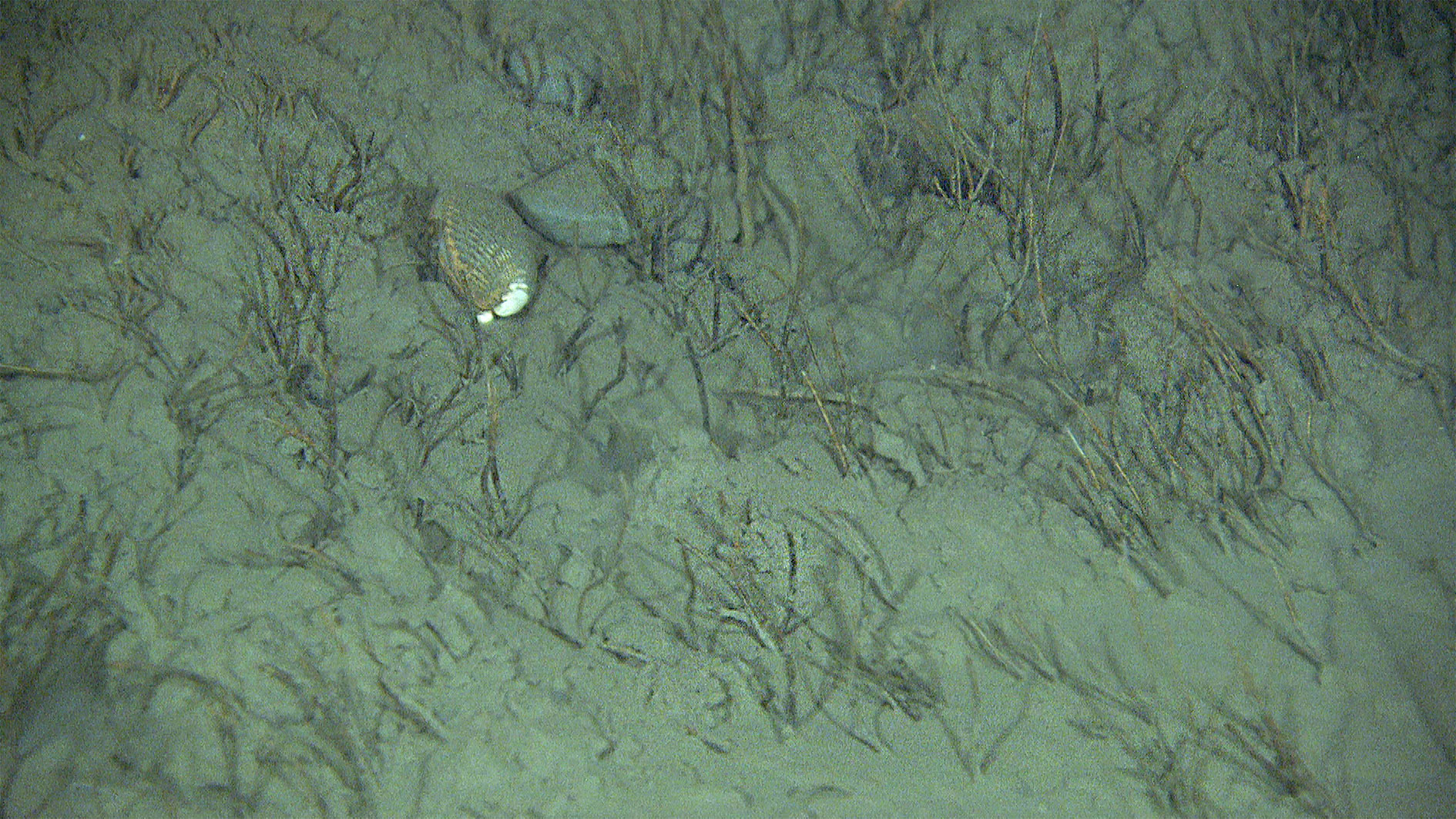
The neighbours it sees include the abundant bottom-dwelling shrimps, which often perform a little “moonwalk” dance when the camera rig lands with its bright spotlights.

The colourful anemones look soft and beautiful, but don’t underestimate them: their tentacles are a dangerous trap with stinging cells that help them to catch any food that comes close to them.
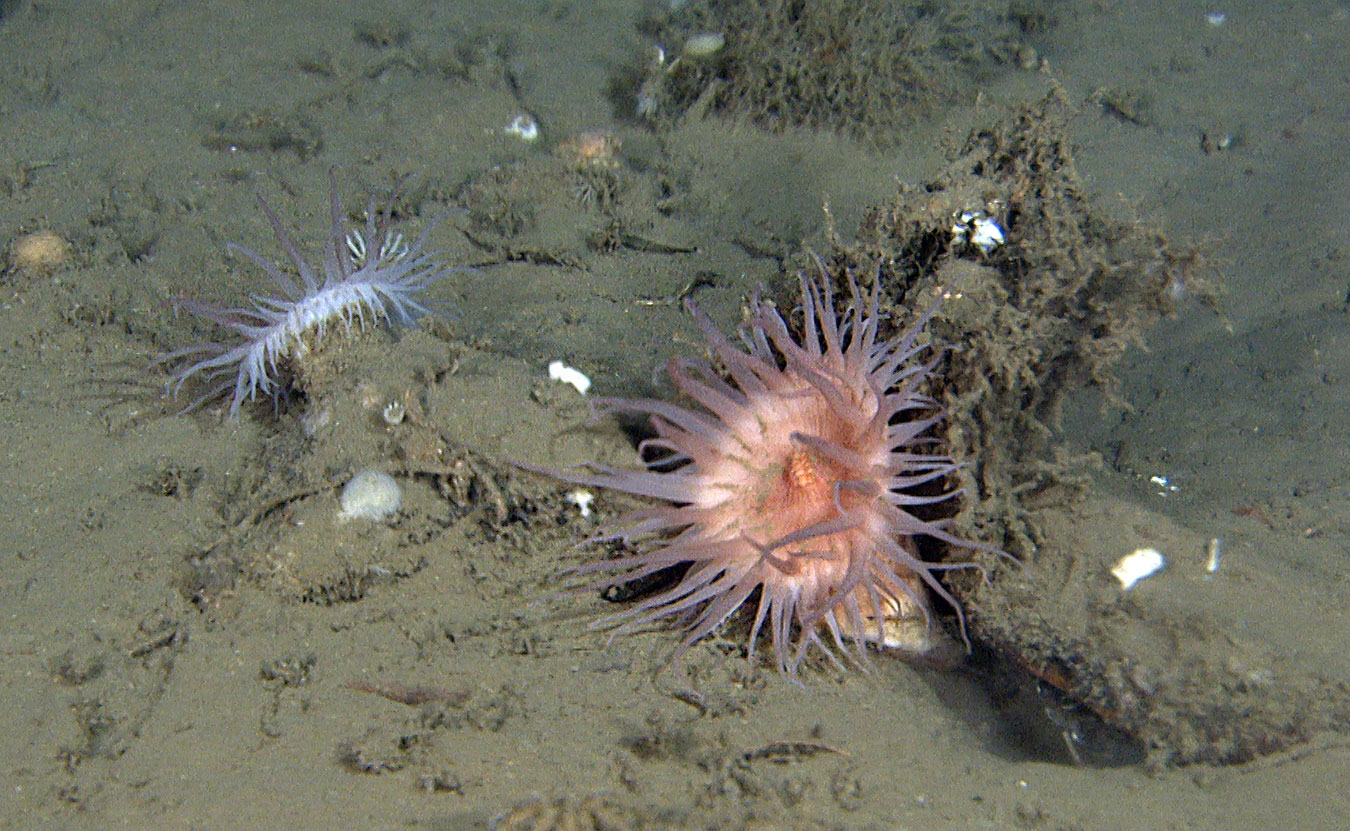
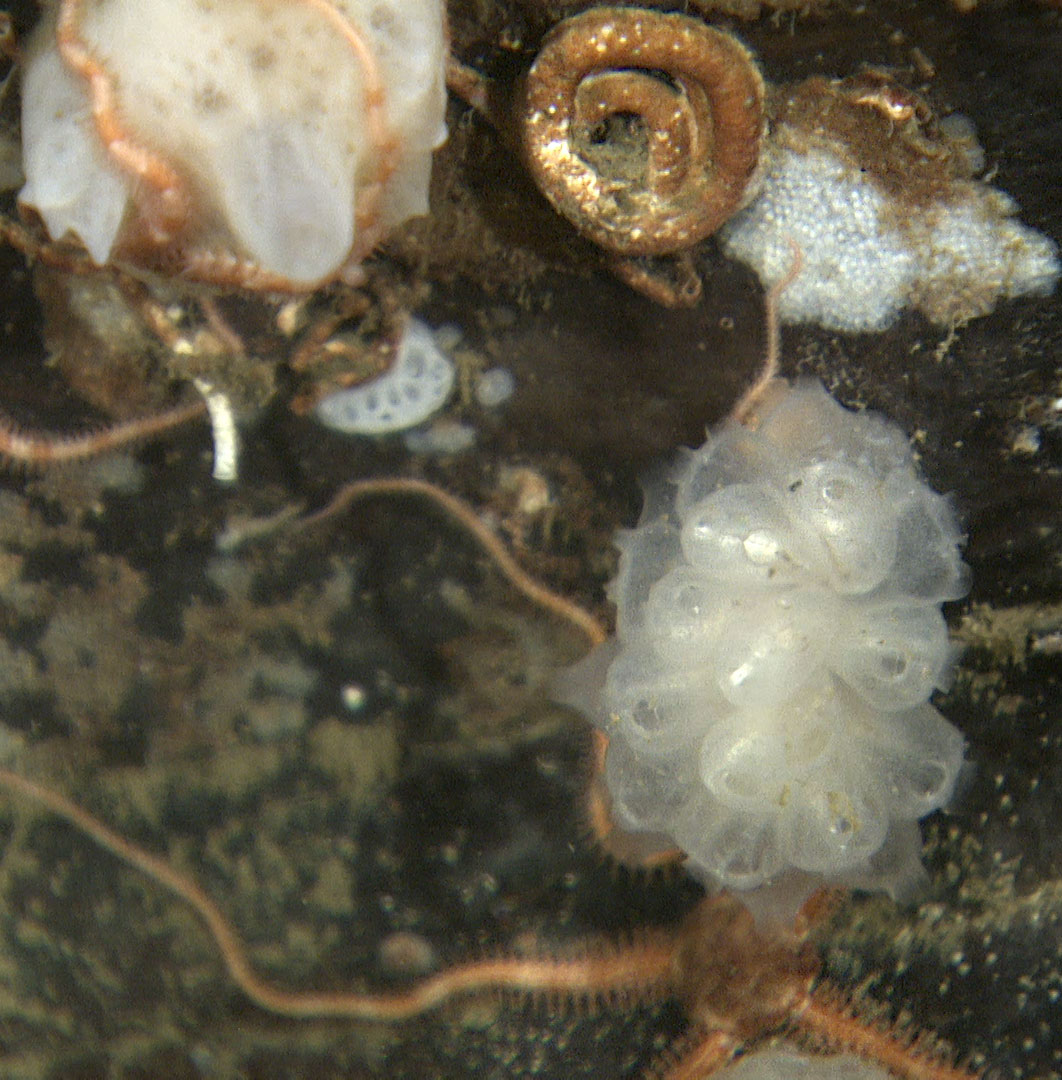
There are lots of beautiful gardens in the churchyard. However, they are not home to flowers, but rather colonies of sea squirts packed tightly together. These ones, which are called Kukenthalia borealis, cover large areas. They look like large, transparent cloudberries, and on the photo you can clearly see a ridge between two trawl marks that is carpeted with them. But we know that the diva in the photo below is the starfish Urasterias lincki. You can recognise it from its bright red colour and the white papillae along its arms. The garden also contains cauliflower corals and large bunches of the anemone Liponema multicorne.

A dangerous predator stalks the churchyard, frequently making an appearance on our screens. It is one of the large sea spiders, Colessendeis. It has eight legs, and a snout that it uses to suck the innards out of its unfortunate prey. His much smaller cousin is also pictured below, carrying all of its children on its back.

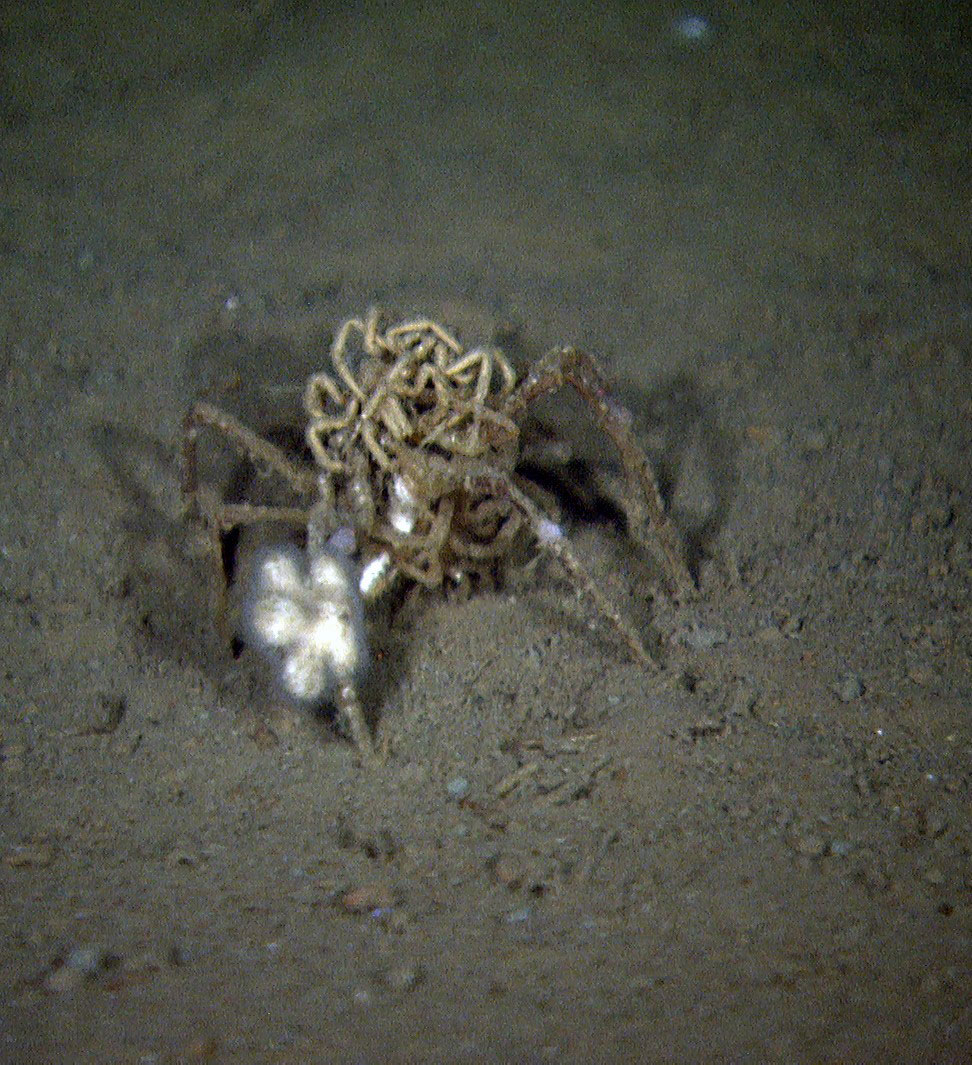
After 3-4 days of mapping Kirkegården, it turns out that there aren’t any desert areas here. Once the sediments settle after the video rig has landed, and we look more closely, we see a multitude of creatures of all colours and shapes. These include snow crabs, a fish called the Atlantic poacher, frilly nudibranchs, long-armed brittle stars and egg-shaped sponges. So don’t be fooled by the name of the area, and take a look at the pictures – they are pretty amazing!
